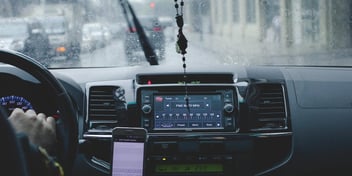Innovative safety technology is a hot topic right now, and it’s one that we should all be paying attention to. There are so many categories of safety technology, and it’s likely that your workplace can benefit from at least a few of them. One of the biggest trends this year has been the use of drones, or unmanned aerial vehicles (UAVs), on job sites.
We sat down with safety consultant and commercial remote pilot Ben Hissam from the Ohio Bureau of Workers’ Compensation Division of Safety and Hygiene to talk about how drones are and can be used as a safety device in workplaces around the world.
Drone Uses
Drones can be used for a tremendous number of things, including recreation. Ben says that recreational flying has led to a negative view of drones by many people because of irresponsible behaviors, but a great deal of drone use is commercial and professional in nature.
“Drones have a bad overview because people think that they're predators and that people are eavesdropping, and they're really not. There are a lot of good applications that drones have,” said Ben.
In order to operate drones commercially, a special pilot’s license is required. These remote pilots, like Ben, have a great understanding of the laws and safety information associated with UAVs as well as the practical uses and future capabilities.
Ben is an instructor for HAZMAT/HAZWOPER, which means emergency response and job site safety is at the front of his mind when it comes to operating drones. He says that is a new and upcoming technology in the field, and new uses are being tested and implemented constantly.
Cameras
UAVs with affixed cameras can be an incredibly useful tool for remote locations or sites with a large number of physical hazards. Cameras can be used to complete or assist with inspections on construction sites or other types of visual information gathering in real time. We commonly see this type of use in news footage of accidents or severe weather events (e.g. hurricanes, tornadoes damage assessment).
Thermal cameras can also be used to relay information about situations in which visual range is limited or unknown hazards could be present. By sensing heat information remotely, pilots and safety managers can help to inform responders about the environment so that they can be prepared before physically entering a site.
“We just had an ammonia tank truck that flipped,” said Ben, “and a drone use would be tremendous for that—just to be able to go out before I’d have to send anybody into harm’s way.”
Future Implications
“As I always say,” said Ben, “no pun intended—the sky is the limit. This is in its infancy phase. Drones are getting bigger and bigger with more applications.”
And he’s right. The sky is the limit. With new emerging technologies, drones are becoming more useful because of creative solutions devised in workplaces around the world. One of the main areas of focus for these future implications is emergency response, but there is an unlimited number of possibilities with pilots like Ben working to create safer, more efficient workplaces.
Safety technology can be overwhelming we have written a few blogs that we think can be helpful. Here is one on picking new safety technology that we think you will enjoy. As well download our eBook below to learn more about safety technology in your workplace.






Leave a Comment